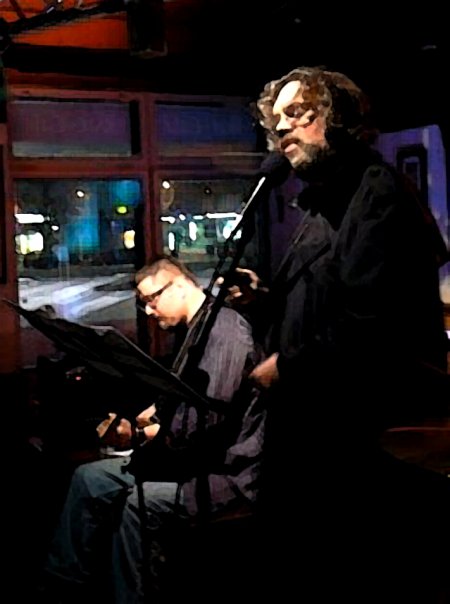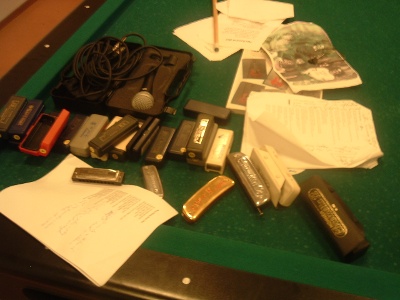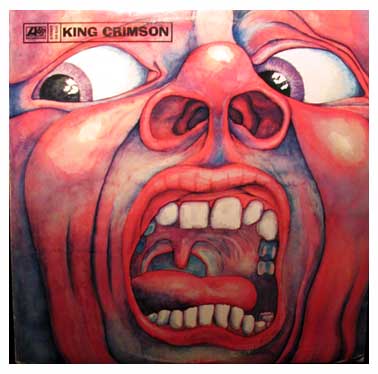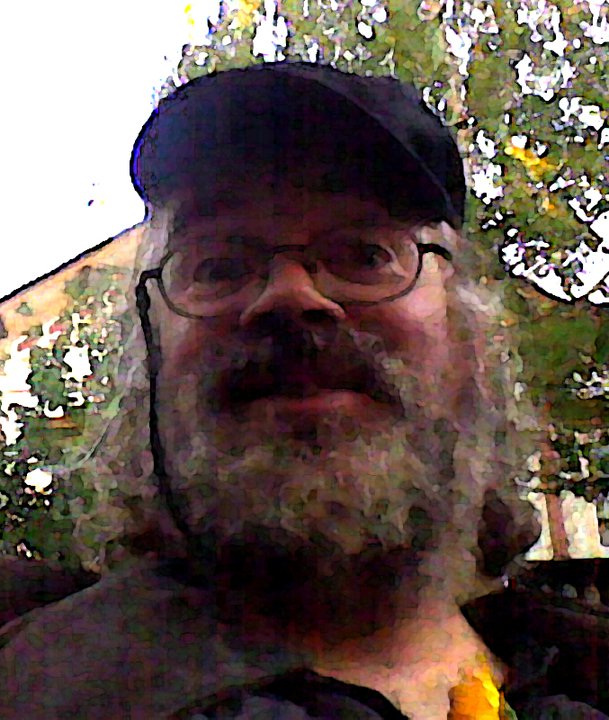My Monday Morning Musings may be essential to BareFoot MusicNews, and I humbly present this one, though, sadly, a bit late. So, in the tradition of Celtic folk music, I write this letter to explain. (This story was also an episode on Mythbuster’s, although, strangely, they never mentioned the song. Someone should contact the Discovery Channel.)
Oh. I am still alive and healthy - Thank you for asking - although ever since the last gig I have been wracked with terrible back pain. Have I mentioned that at these gigs they pay me in beer, which eases the pain. The question is “What does a gig have to do with a bad back and what does a bad back have to do with being a bit late writing an article?”
Ah, stay tuned…
You have heard this bit of the story before, though not in such horrific detail. As for the back pain… well, “Life is pain… Anyone who says differently is selling something." This is also a parable for being naïve about technical stuff and losing control of your music. So pay attention.
When we had a sound man for the gig there were all types of problems. I kept telling our sound guy that I wanted to sing and play into the same microphone which was fed through the amp which I was used to. I could use my own amp as a monitor and then we could mike it into the house. Also, with a hand-held mic I get to move about, which I like. It lets me interact with the audience. But our sound guy would say, “No. Listen to me. I have twenty years experience!” So I had to sing into a separate vocal mic which was miked directly into the house system while my harp came from my amp which was next to me so I could monitor my harmonica. I was trying to monitor different parts of my own performance through two different systems. This is difficult.

So I am getting two different signals from different sources and I have no way to coordinate them. Well, that means I could not monitor my vocals properly. And I had no idea what the audience was hearing. It’s just not on if my harp sounds as clear as a bell and I have to strain vocally, and I am getting two different signals from two different sources. The house system was pointed away from me so I can’t hear it. The voice can go pretty quick if I push it too much, and I had to push to hear myself. And I can get pretty cranky if I have to push. Not fun. And with two mikes there was constant feedback problems. The problem might also be that the club we were playing in was just too loud. Our biggest problem may also have been that despite “20 years experience” our sound guy was just a shitty sound guy…

Well, the level of the sound guy’s skill is besides the point. If you are a musician you have to take control of the technical aspects. Your instrument is not just your guitar or your keyboard or your voice or your harmonica. It is also the electronics, the amp, the sound board, the levels, the effects, the pedals, the acoustics of the room and even the house system. You put all those things in the hands of a sound guy and you have lost control over the quality of your music. If you don’t have 100-percent trust in your sound guy, if you cannot trust him to be there behind the board with headphones on monitoring all these things, you may just as well pack it in and go home. Now, I have been advised by certain people that once the sound system is set up it doesn’t need monitoring. That is a load of ####. I have worked in TV, and when the show goes into production the sound people do not bugger off and go for coffee. And a TV broadcast in a studio is a lot less demanding than a live concert.

Well, as for our gigs, the last gig we ever did with that sound man was the night I saw him sitting at a table in front of the stage drinking beer and flirting with girls. He had tucked our sound board conveniently behind the bar. I had to call from the stage in the middle of a song because he wasn’t paying attention to my frantic hand signals.
“George (The name has been changed to protect the guilty), I can’t hear my voice and I am having feedback problems.”
He looked up from his giggling girlfriend and his mountain of free beer he was getting for being our sound man and a look of mild annoyance crossed over his face. He wrote a little note on a slip of paper, passed it to the bartender, and went back to flirting. If I didn’t have to entertain I would have jumped off the stage and throttled the man.
So you, as a performer, will lose control if you cannot monitor your own performance and control those elements. I have since bought a distortion pedal. The pedal does not only control the distortion, giving you a nice tone on your harmonica, it also controls the levels. That means, for your harp and your vocals you are going to be at different levels if you use the same microphone. If you cup the mic in your hands as I do then it is going to naturally be louder than your vocals. Also, this setup works for me because I do not sing and play at the same time. So I can use the same amp to monitor, which is cool. For someone who plays guitar and sings at the same time I recommend two separate monitoring amps on stage, of course.
Note that I am not trying to sell anything here. We are just a poor band. I would give more info on my amp but it has been in the back of Eric’s car ever since the gig. The pedal is in my kitbag with my harmonicas, microphone, plugs, extension chords, duct tape, and music stand, so I will mention the name of the pedal here.

The amp I use is an old and small 1970s guitar amp. It is not a tube amp but it is extremely powerful. If you plug a Fender into it you can get a real vintage sound. It also provides some really nice volume/reverb-based distortion effects for the harp. But to get really clean vocals through that amp you have to set input volume at low, master volume at high, bass and reverb to 0 and jack the treble up to full. For a good tube-style distortion for the harp I use a Beringer pedal. I understand the Beringer pedals are similar to and adequate substitutes for much more expensive pedals. On the pedal I crank the distortion and tone way up and pull way back on the volume, otherwise I do get feedback. But I don’t always use the pedal. If I really want a clean harp sound - if I am doing a more folksy or traditional style then I simply play the harp in one hand and modulate microphone distance with the other. It works very well. Of course, it all varies according to the dynamics of the room and the position of the amp and microphone. So, I am able to use my own amp as monitor now. I can hear myself, and I can modulate my own volume - vocals and harmonica - using the position of the microphone. And, most importantly, I can move about on stage.
So what does all this have to do with being late with my article?

Well, I naturally have a bad back, but something comes over me when I perform. There is a natural rush of adrenaline to my system and I feel no pain and move around a lot more when I entertain. Well, I used to be like a rock and roll preacher, locked to the spot of the mic stand, arms spread calling to the gods of Rock. When I was able to take away the mic stand I got to move back and forth and talk to the audience, jump around, wiggle my hips a bit, quite a bit actually. Well, I didn’t know it at the time but I threw my back out during the last performance, and everything else apparently. I woke up the next day in severe pain. I have been unable to sit for five minutes at a time without turning into Quasimoto. So I have been kind of avoiding sitting for two weeks. But now I have been sitting for quite a while writing this article. Anything for rock and roll. I will know more when I stand. Peace and love to everybody and goodbye for another week.
(Pause and then distant blood curdling scream.)








